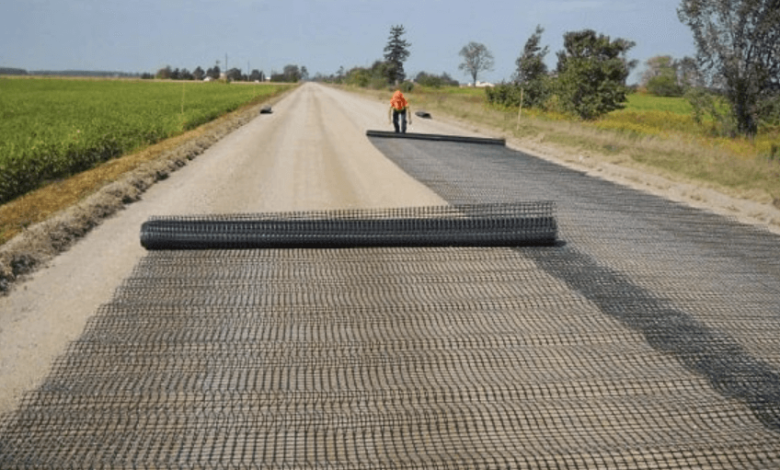Understanding Fabric Density and Its Importance in Geotextiles

Introduction
In civil engineering, the selection of materials directly impacts the durability, stability, and performance of infrastructure projects. One of the most versatile and essential materials used today is geotextile fabric. It plays a crucial role in soil reinforcement, erosion control, and drainage systems. To understand its efficiency and suitability for various applications, it is important to know about gsm full form in geotextile. This measurement defines the weight and density of the fabric, influencing its strength, filtration capability, and performance under stress.
What Are Geotextiles
Geotextiles are synthetic permeable fabrics used to improve soil characteristics. They act as separators, filters, reinforcements, and drainage aids in a variety of construction projects. These fabrics are primarily made from polypropylene or polyester because of their resistance to degradation and ability to withstand environmental stress.
There are two main types of geotextiles—woven and non-woven. Woven geotextiles are produced by interlacing threads in a regular pattern, offering high tensile strength. Non-woven geotextiles, on the other hand, are created through bonding fibers mechanically or thermally, resulting in a fabric suitable for filtration and drainage applications.
Understanding the Concept of GSM
When discussing gsm full form in geotextile, the term “GSM” stands for grams per square meter. This unit represents the mass of the geotextile fabric over a given area. It essentially measures the density and thickness of the material. The higher the gsm value, the heavier and stronger the fabric will be. Conversely, a lower gsm indicates a lighter and more flexible fabric.
This measurement helps engineers and project planners determine which type of geotextile is most appropriate for a specific application. For example, a 100–200 gsm fabric may be suitable for filtration and separation, while a 400–600 gsm fabric would be ideal for reinforcement or erosion control.
The Role of GSM in Performance
The gsm value has a direct relationship with the mechanical and hydraulic properties of the fabric. Here are some important aspects influenced by gsm:
1. Strength and Load Capacity
A higher gsm means the fabric is thicker and can endure greater loads. In construction projects where heavy machinery operates or soil pressure is significant, using a high gsm fabric prevents deformation and tearing.
2. Permeability and Filtration
Lower gsm geotextiles usually have larger pore sizes, allowing water to pass through easily while filtering soil particles. In contrast, higher gsm fabrics have smaller pores, offering better control over filtration and sediment retention.
3. Resistance to Damage
During installation and operation, geotextiles face mechanical stress. A fabric with an gsm full form in geotextile ensures resistance against puncture, abrasion, and UV exposure, increasing its lifespan.
See also: Business Class Flights – Affordable Luxury for Travel to India
Applications Based on GSM Range
Different gsm values are suited for specific engineering and environmental applications. Below is a general classification:
Low GSM (100–200)
- Suitable for lightweight applications such as landscaping, garden beds, and minor drainage projects.
- Allows water permeability while preventing soil mixing.
- Flexible and easy to install.
Medium GSM (200–400)
- Used in road foundations, retaining walls, and drainage systems.
- Provides a balance between strength and permeability.
- Offers reliable soil separation and erosion control.
High GSM (400 and above)
- Designed for heavy-duty applications such as embankment reinforcement and land reclamation.
- Provides excellent resistance to high loads and environmental wear.
- Ensures long-term durability and stability.
How to Select the Right GSM
Choosing the right gsm for a project depends on various technical and environmental factors. Here are key considerations:
Type of Soil
Soft or clayey soils require higher gsm fabrics to prevent deformation and soil migration. In contrast, sandy soils may need lighter fabrics that allow better water flow.
Load Requirements
If the area experiences heavy traffic or load-bearing activity, a high gsm fabric is recommended. It will distribute pressure evenly and protect the underlying soil structure.
Function of the Fabric
Whether the fabric is used for filtration, reinforcement, or separation determines the gsm needed. For instance, filtration needs moderate gsm, while reinforcement requires higher gsm levels.
Environmental Exposure
Projects exposed to sunlight, chemicals, or water should use UV-stabilized and chemically resistant geotextiles with adequate gsm to prevent degradation.
Testing and Quality Control
Manufacturers follow strict standards to ensure that the gsm and other properties of geotextiles meet project requirements. Common testing parameters include:
- Tensile strength: Determines the fabric’s ability to withstand stretching.
- Puncture resistance: Evaluates resistance to sharp objects.
- Permeability rate: Measures how effectively water passes through the material.
- Thickness and mass per unit area: Confirms the gsm value.
These tests follow international standards such as ASTM and ISO to ensure consistency and reliability in performance.
Importance of GSM in Construction and Environmental Projects
GSM plays a vital role in defining how geotextiles behave under different conditions. Below are some examples of its importance:
Road Construction
In road foundations, geotextiles separate different soil layers, preventing them from mixing. The right gsm ensures stability and longevity of the pavement structure.
Drainage Systems
In filtration and drainage, the gsm determines how effectively water can pass through while keeping soil intact. This is essential for maintaining efficient drainage without clogging.
Erosion Control
On slopes, riverbanks, and coastal regions, geotextiles with high gsm provide stability against erosion caused by water and wind forces.
Agriculture and Landscaping
Lightweight fabrics are used for crop protection, soil moisture retention, and weed prevention, where flexibility and permeability are more important than high strength.
Advantages of Choosing the Correct GSM
Selecting the proper gsm value provides several key advantages:
- Enhances project durability and structural integrity.
- Reduces maintenance costs by preventing soil movement and erosion.
- Improves filtration and drainage efficiency.
- Ensures compatibility with environmental conditions.
- Extends the lifespan of roads, pavements, and embankments.
Common Errors in GSM Selection
A frequent mistake is selecting a fabric solely based on cost, without evaluating technical requirements. Using a low gsm material for a high-load project can lead to failure, while choosing an unnecessarily high gsm can increase costs. A balanced approach based on engineering analysis ensures both performance and cost-effectiveness.
Future Outlook of Geotextile Fabric Design
As technology advances, manufacturers are developing geotextiles with optimized gsm values and enhanced durability. Innovations include hybrid fabrics with improved filtration and tensile strength, as well as biodegradable geotextiles that support sustainable construction. Understanding gsm will remain critical as the industry continues to adopt new materials and techniques.
Conclusion
The concept of gsm full form in geotextile is fundamental to understanding fabric quality and application suitability. GSM defines the weight, density, and performance characteristics of geotextiles, influencing how they function in different environments. Selecting the right gsm ensures long-term effectiveness, safety, and durability of infrastructure projects.
By carefully analyzing project conditions and understanding the relationship between gsm and performance, engineers can make informed decisions that lead to successful and sustainable construction outcomes.



